Barry Smith
 Barry Windsor-Smith, also known as Barry Smith (born 25 May 1949) is a British comic book illustrator and painter whose best known work has been produced in the United States.
Barry Windsor-Smith, also known as Barry Smith (born 25 May 1949) is a British comic book illustrator and painter whose best known work has been produced in the United States.
His international acclaim came as the original artist for Marvel Comics’ Conan the Barbarian from 1970 to 1974, where he rapidly evolved a sophisticated and intricate style, introducing elements from diverse artistic influences to graphic storytelling.
Biography
Windsor-Smith was born in Forest Gate, London.
In 1968, Windsor-Smith travelled to New York and presented himself at the offices of Marvel Comics. A suitably impressed Roy Thomas gave him the job of drawing an issue of X-Men, but with no studio and having been kicked out of his hotel, Windsor-Smith was forced to do the work sitting on park benches. The resulting pages secured Windsor-Smith further work with Marvel, even though he was sent back to England within the year as he had no work permit.
Initially credited as Barry Smith, he rose to prominence in the early 1970s as the original penciller for Marvel Comics‘ adaptation of Robert E. Howard‘s Conan the Barbarian character. At first drawing in a manner lifted from Jack Kirby, within a couple of y ears he developed a unique style for comics at the time, borrowing from pre-raphaelites such as Edward Burne-Jones and Dante Gabriel Rossetti (whose influence would saturate Windsor-Smith’s artwork even more in later years). Along with writer Roy Thomas, Smith adapted the Howard short stories “The Frost-Giant’s Daughter”, “Tower of the Elephant”, “Rogues in the House”, and “Red Nails”. During their run together, Thomas and Smith also created original adventures and characters as well, including the flame-haired warrior-woman, Red Sonja, loosely based on Red Sonya, a character from one of Howard’s non-Conan stories.
ears he developed a unique style for comics at the time, borrowing from pre-raphaelites such as Edward Burne-Jones and Dante Gabriel Rossetti (whose influence would saturate Windsor-Smith’s artwork even more in later years). Along with writer Roy Thomas, Smith adapted the Howard short stories “The Frost-Giant’s Daughter”, “Tower of the Elephant”, “Rogues in the House”, and “Red Nails”. During their run together, Thomas and Smith also created original adventures and characters as well, including the flame-haired warrior-woman, Red Sonja, loosely based on Red Sonya, a character from one of Howard’s non-Conan stories.
Shortly thereafter, Smith left comics, added Windsor to his professional name, and began to pursue a career in fine art (although he has returned to the comics field several times since). Granted residential status in the United States, Windsor-Smith in 1974 set up Gorblimey Press, through which he released limited-edition prints of fantasy-based subjects that proved popular. As well, he was one of the four comic book artists-turned-fine-illustrator/painters who, along with Jeff Jones, Mike Kaluta and Bernie Wrightson, formed a small artist’s loft commune in 1975 known as The Studio. By 1979 they’d produced enough material to issue a handsome art book under the name The Studio, which was published by Dragon’s Dream (ISBN 9063325819). By this point, Windsor-Smith had fully embraced a symbolist and Pre-Raphaelitism aesthetic.
Windsor-Smith returned to Marvel in the 1980s as the artist & colorist of a Machine Man limited series (1984), provided plot/pencils/colors for Iron Man Vol. 1, #232 (July, 1988), and as the writer and artist of the serialized “Weapon X” feature in Marvel Comics Presents #72-84 (1991). The latter was Windsor-Smith’s own, original conception of the origin of the X-Men ch aracter Wolverine. During this period he also produced a well-regarded story featuring The Thing and Human Torch that was published in Marvel Fanfare.
aracter Wolverine. During this period he also produced a well-regarded story featuring The Thing and Human Torch that was published in Marvel Fanfare.
Valiant Comics
In late 1991, BWS was approached to act as creative director and lead artist at Valiant Comics, a start-up publisher that was trying to break into the comics market. Valiant, founded by former Marvel Comics writer and editor-in-chief Jim Shooter, had licensed a few dormant characters from 1960s and 70s publisher Gold Key Comics. Those characters, Magnus Robot Fighter; Doctor Solar; and Turok Dinosaur Hunter, were then supplemented with Valiant’s own original titles, including Harbinger, X-O Manowar, Shadowman, Archer and Armstrong, Eternal Warrior, Bloodshot, Ninjak and Rai, among others.
Windsor-Smith was the chief designer of the Unity crossover for Valiant Comics and writer and artist for most of the first dozen issues of the title Archer and Armstrong. Valiant became a phenomenon, se lling nearly two million copies of premiere issues, and climbing to the third largest comics publisher in the U.S. behind the long-time industry leaders Marvel and DC. This success was due in large part to the quality of the material produced.
lling nearly two million copies of premiere issues, and climbing to the third largest comics publisher in the U.S. behind the long-time industry leaders Marvel and DC. This success was due in large part to the quality of the material produced.
In 1993, Barry Windsor-Smith abruptly walked away from Valiant, as he wasn’t aware of what his position was within in the company after Jim Shooter‘s departure, which was soon after sold to video game giant Acclaim Entertainment for $65 million. Acclaim Entertainment neglected the publication of comics in favor of exploiting the characters for video games.
Storyteller
He did some work for Malibu’s Ultraverse line (see Rune) as well as for Dark Horse Comics, and at Image Comics, working on the crossover event Wildstorm Rising at WildStorm Productions. At Dark Horse Windsor-Smith created an oversized series, Barry Windsor-Smith: Storyteller, that contained three ongoing features: The Paradoxman, Young GODS, and The Freebooters, that last a lighthearted action series about a Conan-like character grown older and heavier and now running a tavern. The comic book was cancelled after nine issues; Fantagraphics Books has issued hardcover collections of Young GODS , The Freebooters and The Paradoxman. Each of these hardcover volumes includes supplemental features, essays and previously unseen art.
Fantagraphics has also published Windsor-Smith’s Adastra in Africa, a hardcover starring a character from Young GODS in a story originally intended to be Lifedeath III of Marvel’s The Uncanny X-Men with the character Storm. Fantagraphics has also published Opus, a series of hardcover art books featuri ng Windsor-Smith’s work from throughout his career. These volumes also include his ongoing autobiographical story Time Rise, which features details of his extraordinary experiences with seemingly paranormal phenomena.
ng Windsor-Smith’s work from throughout his career. These volumes also include his ongoing autobiographical story Time Rise, which features details of his extraordinary experiences with seemingly paranormal phenomena.
In January 2006, BWS announced on the website Comic Book Galaxy that he is in negotiations to publish a graphic novel at Marvel Comics about the character The Thing.
Awards
- 1970 – Academy of Comic Book Arts Awards Best Individual Story (“Lair of the Beast Men,” by Roy Thomas & Barry Smith, from Conan the Barbarian #2) (nominated)
- 1971 – Academy of Comic Book Arts Awards Best Continuing Feature (Conan the Barbarian) (winner)
- 1971 – Academy of Comic Book Arts Awards Best Individual Story (“Devil Wings over Shadizar,” by Roy Thomas & Barry Smith, from Conan the Barbarian #6 & “Tower of the Elephant,” by Roy Thomas & Barry Smith, from Conan the Barbarian #4) (nominated)
- 1972 – Academy of Comic Book Arts Awards Best Individual Story Dramatic (“The Black Hound of Vengeance,” by Roy Thomas & Barry Smith, from Conan the Barbarian #20) (nominated)
- 1973 – Academy of Comic Book Arts Awards Best Continuing Feature (Conan the Barbarian) (nominated)
- 1973 – Academy of Comic Book Arts Awards Best Individual Story Dramatic (“Song of Red Sonja,” by Roy Thomas & Barry Smith, from Conan the Barbarian #24) (winner)
- 1973 British Fantasy Society Awards Best Comic (Conan the Barbarian) (winner)
- 1974 – Academy of Comic Book Arts Awards Best Individual Story Dramatic (“”Red Nails,” by Roy Thomas & Barry Smith, from Savage Tales #1-3) (nominated)

- 1974 – Shazam Award for Superior Achievement by an Individual (nominated)
- 1974 – British Fantasy Society Awards Best Comic (Conan the Barbarian) (winner)
- 1975 – Inkpot Award (winner)
- 1975 – British Fantasy Society Awards Best Comic (The Savage Sword of Conan) (winner)
- 1976 – British Fantasy Society Awards Best Comic (The Savage Sword of Conan) (winner)
- 1977 – Eagle Awards Favourite Comicbook Artist (nominated)
- 1985 – Haxtur Awards Best Long Story (Machine Man) (nominated)
- 1985 – Haxtur Awards Best Drawing (Machine Man) (nominated)
- 1997 – Comics’ Buyer’s Guide Favorite Colorist (nominated)
- 1997 – Harvey Award Best New Series (Barry Windsor-Smith: Storyteller) (nominated)
- 1998 – Comics’ Buyer’s Guide Favorite Colorist (nominated)
- 1990 – Gem Award for Outstanding Service and Product Best Comic under $3 (Deathmate Prologue) (nominated)
- 2008 – Eisner Awards Hall of Fame (winner)

Quotes
- “It shall take a long-term, keenly processed, whole-world paradigm shift in our consciousness to perceive, acknowledge, and accept that all that we see, hear, smell, touch and taste are but five tiny shells on one small dune on the cosmic beach-head of Everywhere Else.” – Barry Windsor-Smith[1]
- “Barry isn’t cheating. He’s giving you all the pieces and they are in plain sight. No hidden meanings here. No coy tricks. No comic industry in jokes. No names of pals and cohorts sprayed on tenement walls. No TV show or pop culture references glibly thrown in to register high on the Cool-O-Meter. Just story and characterization and damn fine drawing.” – Larry Hama[2]
- Asked to name his favorite Storm stories, Chris Claremont responds, “The two ‘LifeDeaths,’ both collaborations with Barry Windsor-Smith.”[3]
- “[T]he major [comic book] companies’ standard contract, deceptively titled “WORK FOR HIRE,” is a legal but unethical instrument designed to rape and plunder young talents of every possible prerogative they would otherwise possess if they had the fortune to work for more scrupulous, morally invested, publishers.” – Barry Windsor-Smith[4]
References
Footnotes
- ^ Comic World (UK) #37, March 1995, reprinted in Comic Book Artist #21. Aug. 2002, p.31b. Interview conducted Oct. 2, 1994.
- ^ Address to Pro Con 93, © 1993 Dave Sim. Available online at: http://www.amptoons.com/howto/sim/procon.html
- ^ OPUS Volume 1, “Time Rise”, © 1999 Barry Windsor-Smith. A.R.R. Published by Fantagraphics Books.
- ^ Epilogue text, WEAPON X Hardcover Edition, Oct., 1992, © Marvel Entertainment Group, Inc.
- ^ “The Perfect Storm,” by Peter Sanderson in Back Issue Magazine No. 8, Feb 2005, pg. 73, published and © by Twomorrows Publishing.
- ^ From text of 2008 Eisner Awards Hall of Fame acceptance speech





















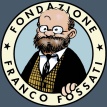

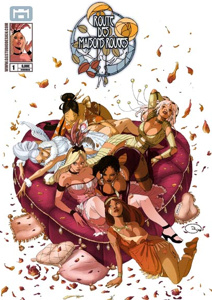




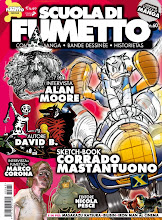











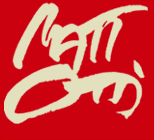

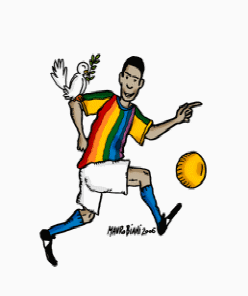



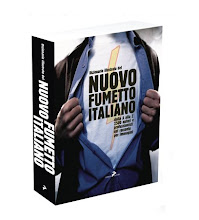


















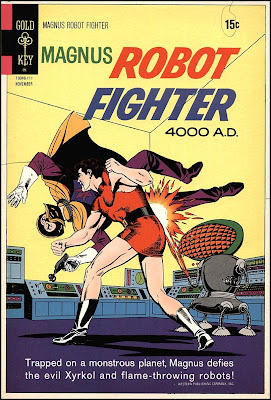















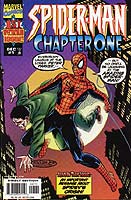













Trackbacks